HAZCAM
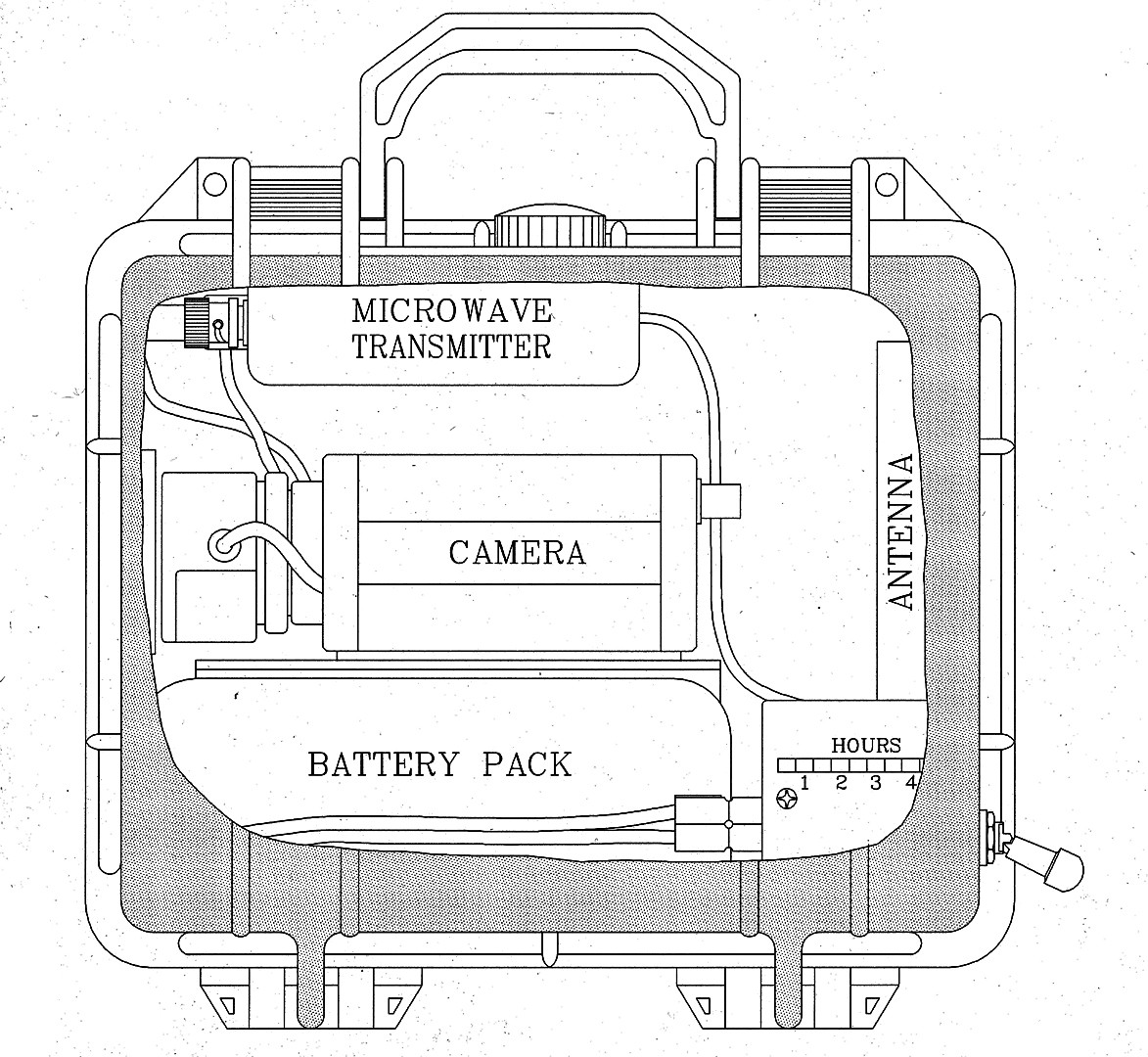
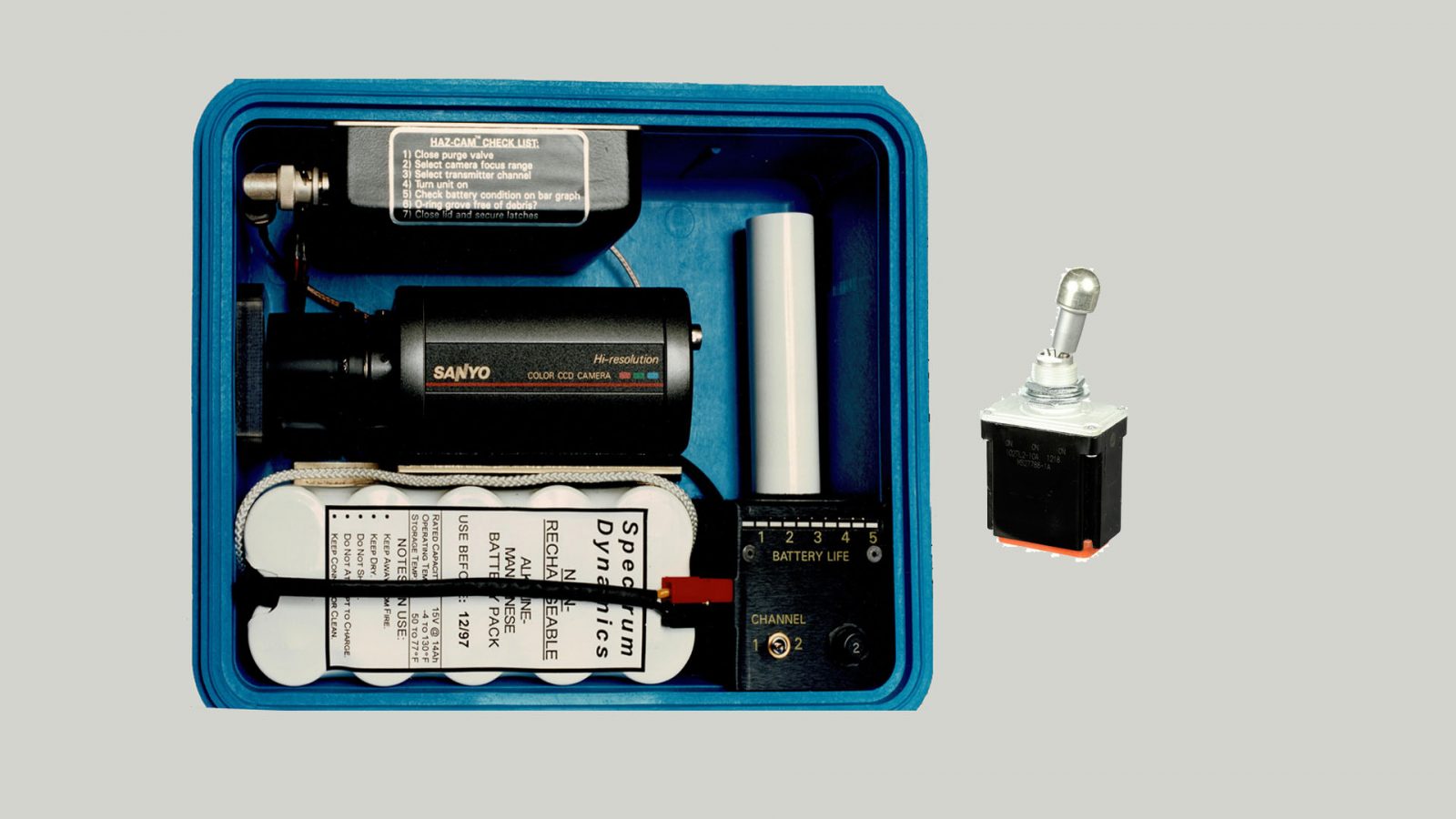
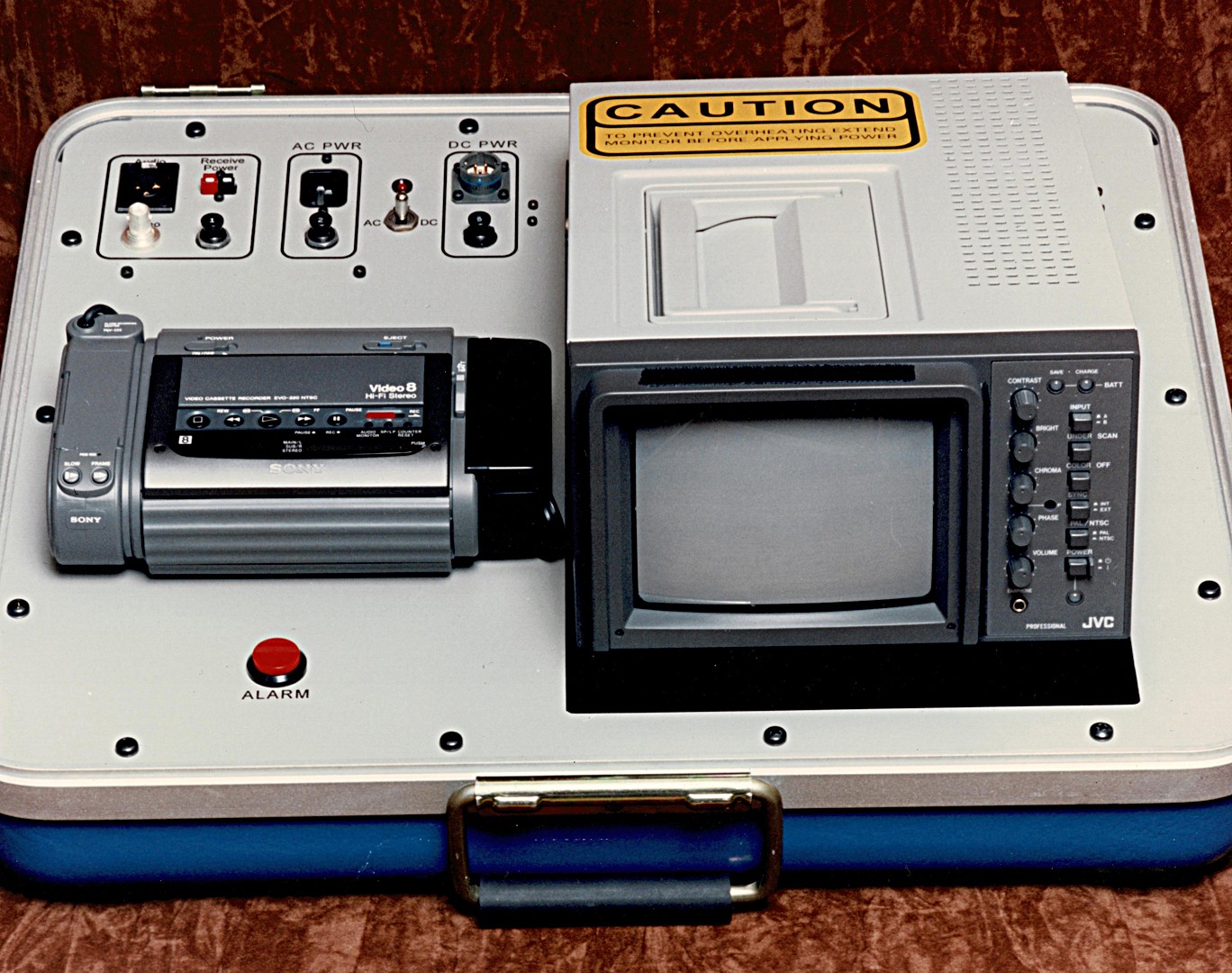
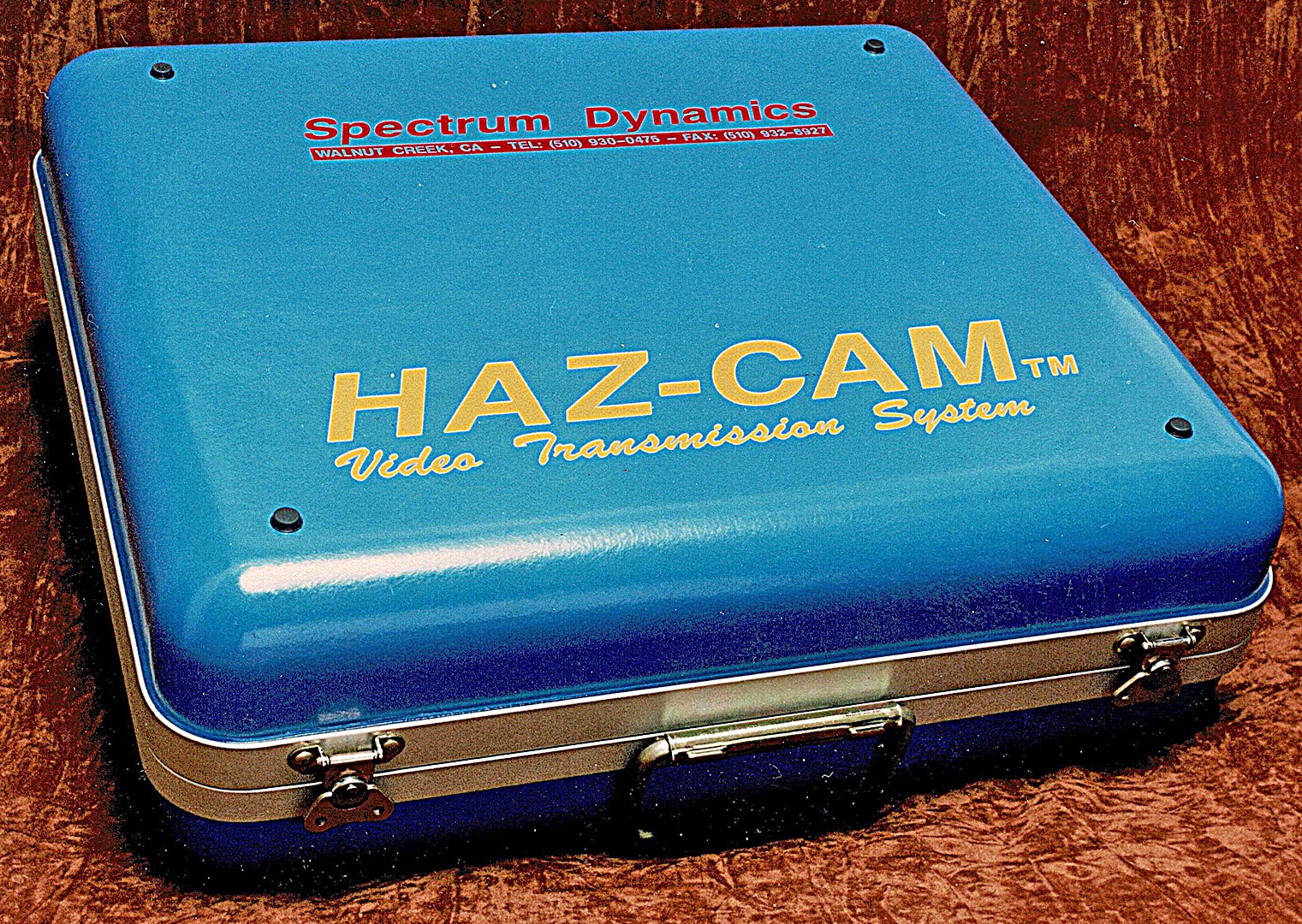
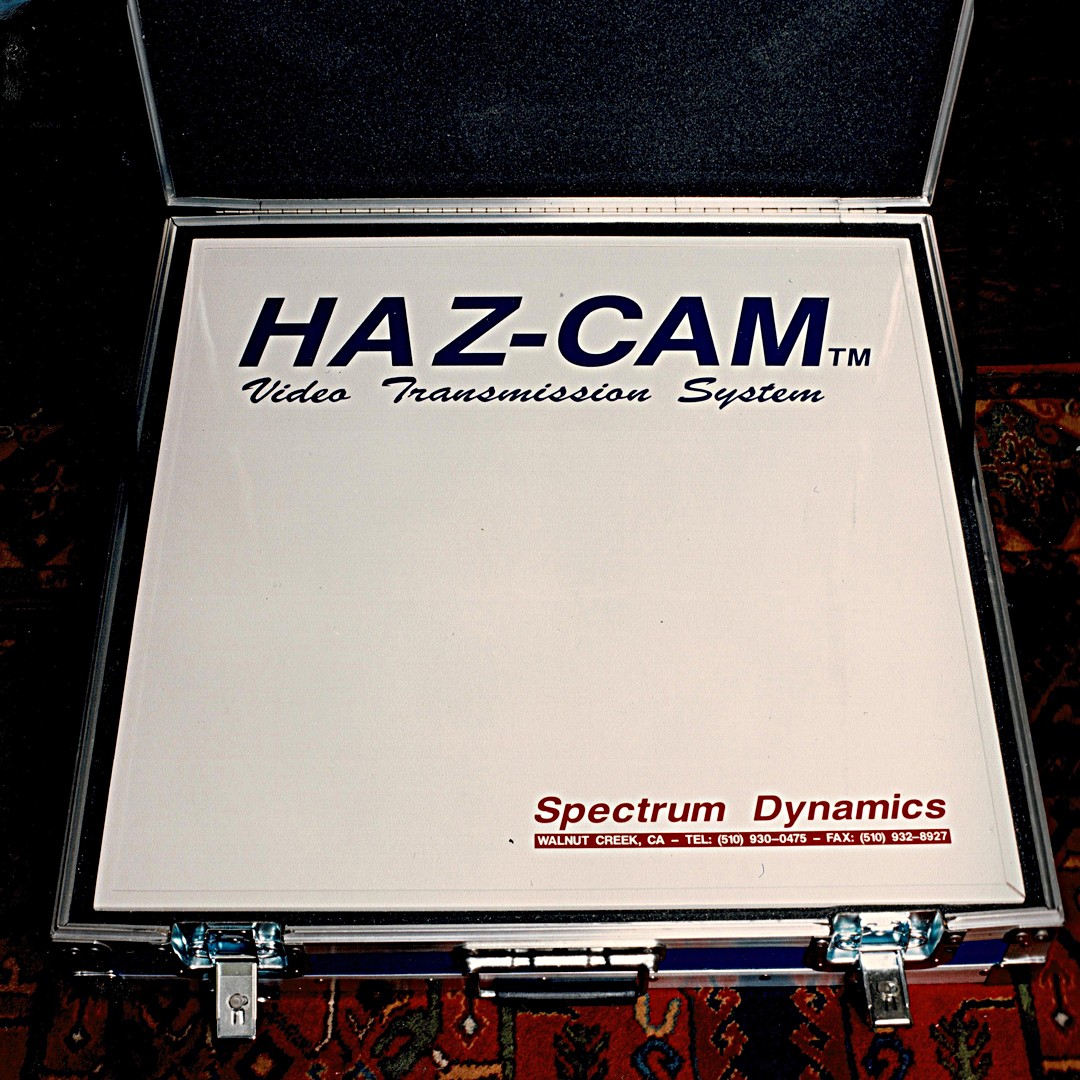
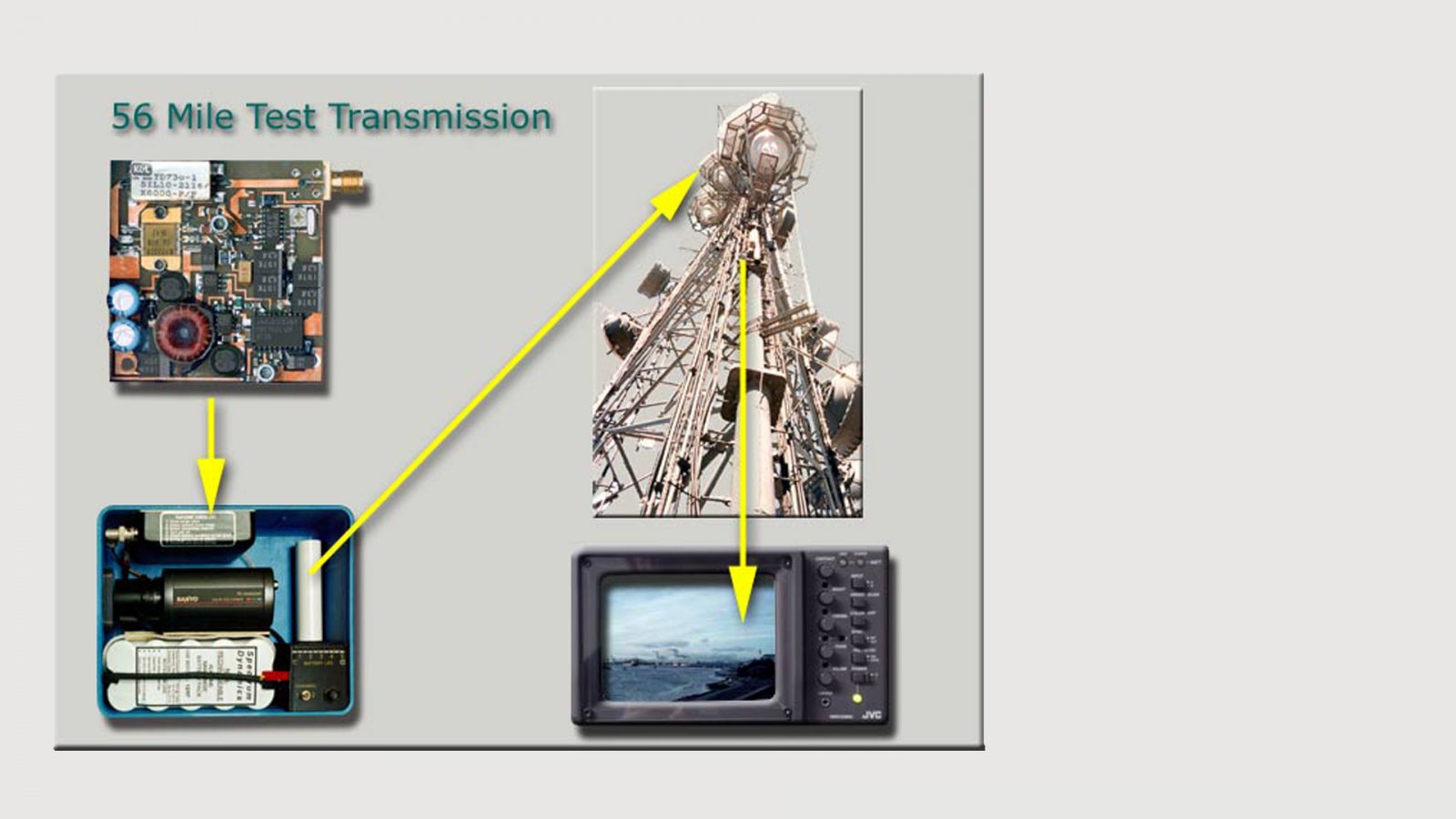
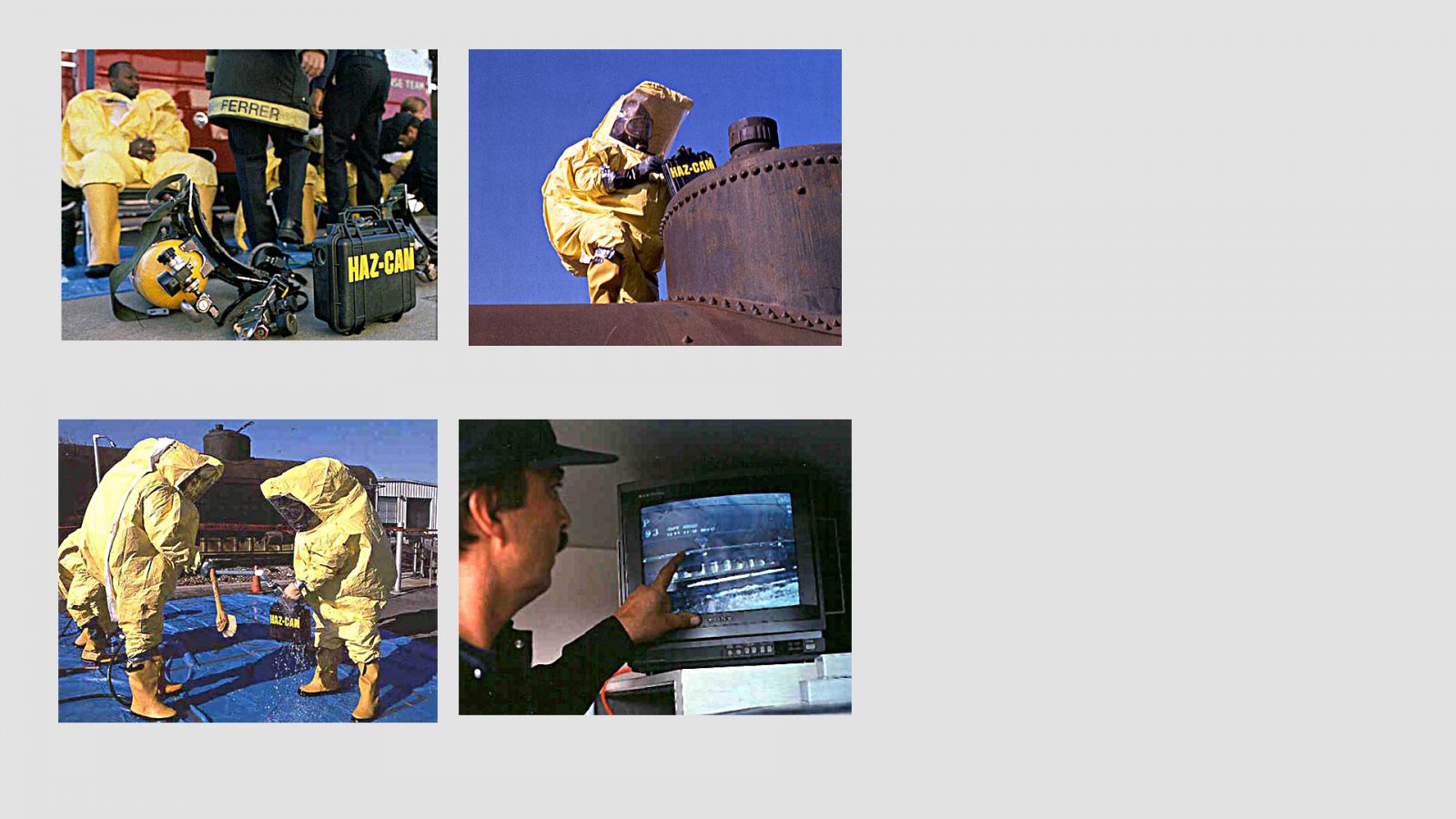
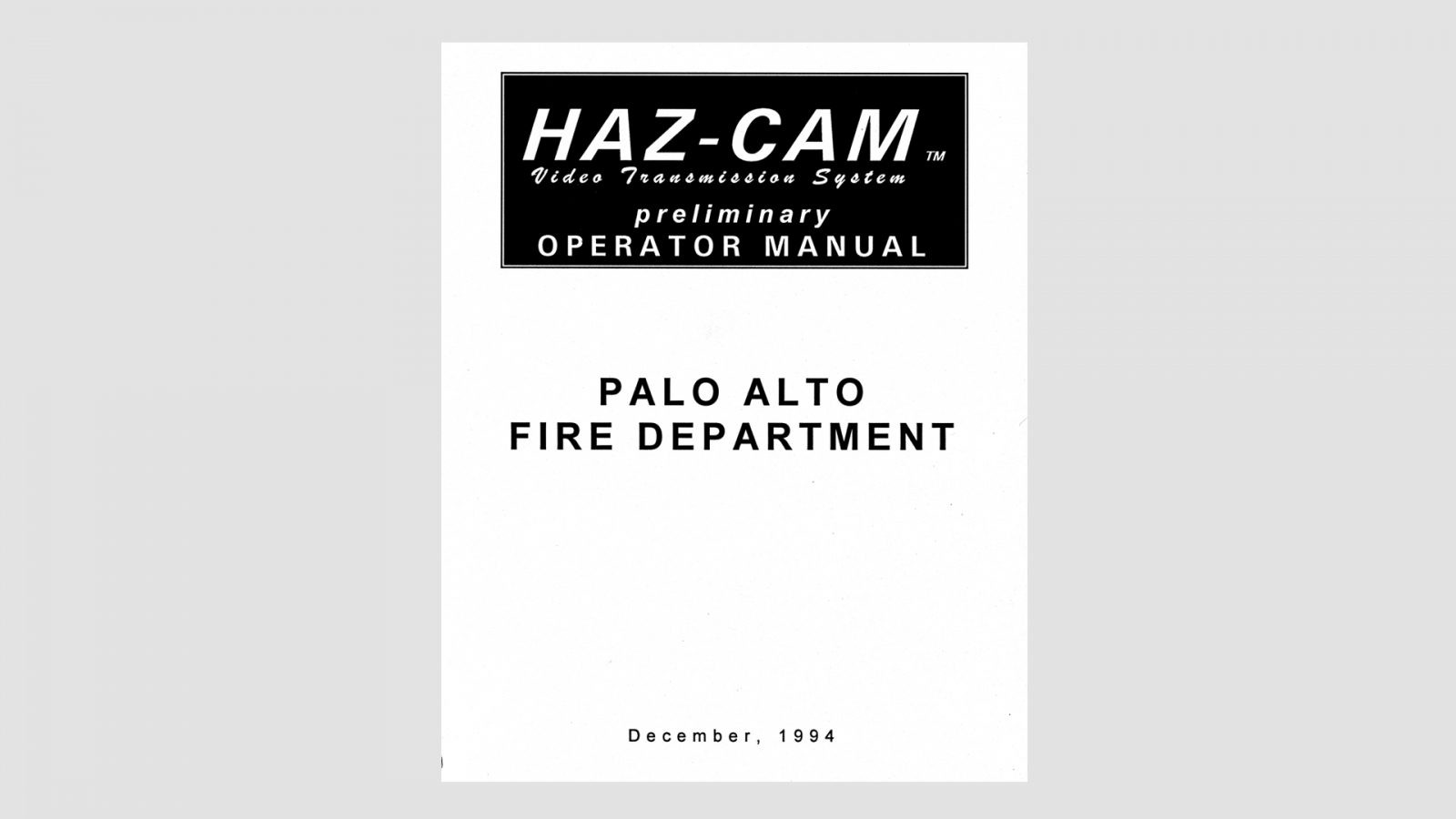
This drawing shows the location of the major components. Notice the large on-off switch on the lower right of the enclosure. It is a military quality switch which incorporated a gate. The toggle must be pulled out and moved over the gate to change the position. This is to prevent inadvertent movement.
Here's my HAZCAM Camera/Transmitter Unit. It had a range of about 2 miles and a duration of 4 hours. There was only on external control - the gated aircraft on/off switch. The switch was sealed with an elastomeric gasket and the entire unit could be submerged in water.
The range of the system could be miles in some cases, but in this application it was meant to reach from a hazardous material hot zone to a command post - probably several blocks at most.
The receive/record subsystem was also designed for simple operation, and consisted of a microwave receiver and antenna (not shown), a battery-powered color monitor, and a battery-powered cassette tape machine. Once in operation the recording could be marked with a tag by pressing the red alarm button.
To transport the receive/record subsystem, the video monitor is retracted and the lid attached to the fiberglass case.
The receive antenna was a flat-panel focal-plane array that could be mounted on a tripod. A much smaller antenna couold be used for short distance applications. This antenna was also housed in a protective case for transport.
My HAZAM camera unit contained a very low-power 2 GHz video transmitter. The output power was only 100 miliwatts, or 0.1 watts. It was only intended to transmit a few blocks.
After completing the KTVU remote 2 GHz ENG receive site on Loma Prieta mountain, I could not resist testing the unit from the KTVU studio location in Oakland. To my great amazement, I was able to receive a good signal over a 56-mile path!
Of course, a fire department HAZMAT team is not going to have the luxury of using a 600-pound, 9-foot tall receive antenna on the top of a 4000-foot mountain, but it was still a very satisfying test of both systems.
OAKLAND FIRE DEPARTMENT HAZMAT EXERCISE
Testing my HAZCAM system in real-world conditions at the OFD training facility went perfectly. During the exercise the camera unit was operated by a firefighter in a level-a HAZMAT suit without difficulty. He was able to send am image of a tanker car valve back to the Incident Command Center where the team leader was able to view it on his video monitor.
The camera unit was then thoroughly decontaminated using soap and water and a scrub brush. As a matter of fact, the unit can be completely submerged in water and it will continue to transmit to the surface without a problem.
Once the HAZCAM system was thoroughly tested, the first system was sold to the Palo Alto Fire Department's HAZMAT unit.
After initial testing with the Oakland Fire Departments' HAZMAT team, This system was sold to the Palo Alto Fire Department.